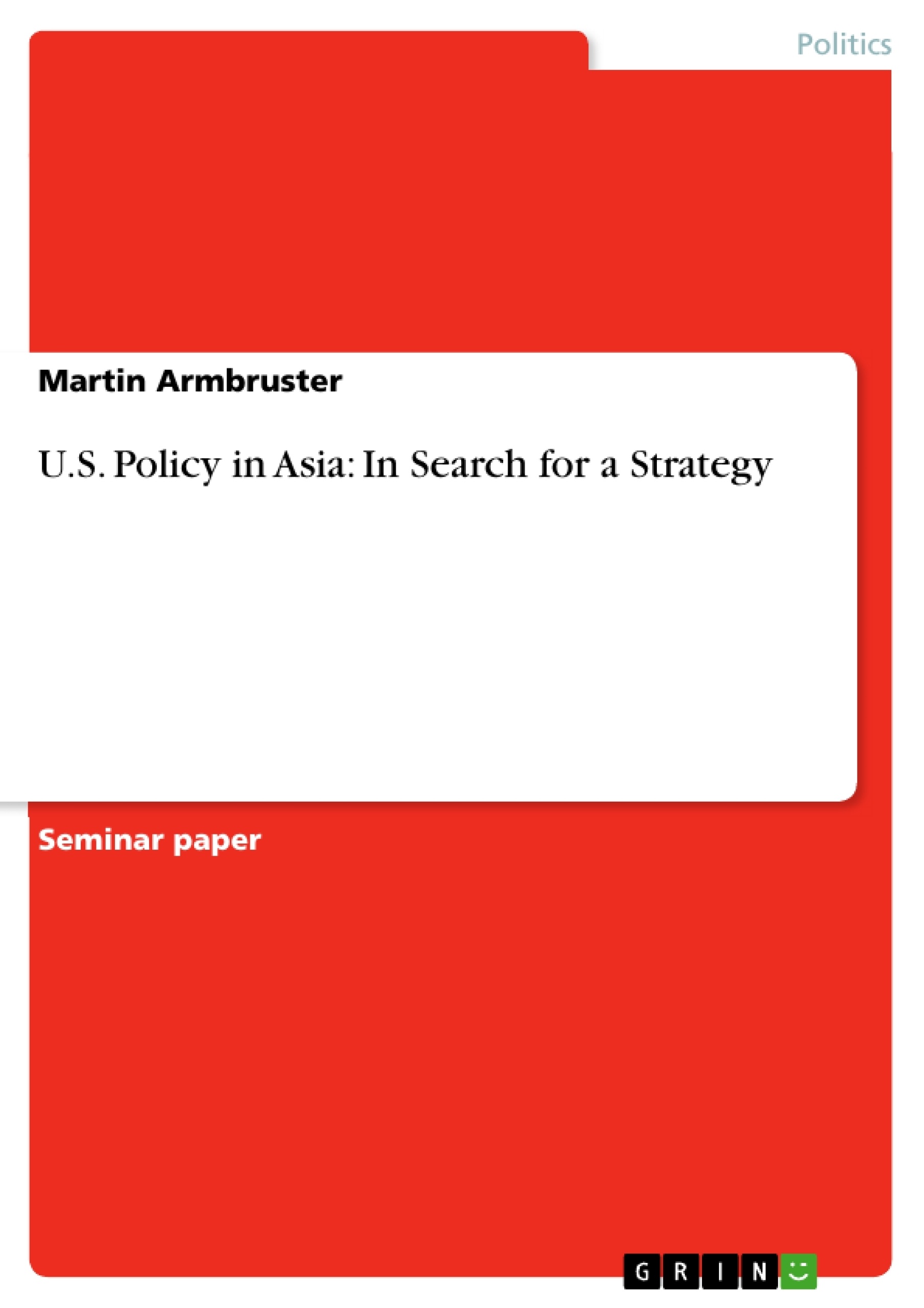With the inauguration of the 44th U.S. President ahead in January 2009, it is not surprising that 2008 has been a year full of proposals, how the U.S.-Asia policy of the next administration should look like. Since the end of the Cold War, the United States has lost its role as the decisive strategic actor in the Asian region. It is now sharing the stage with China which has grown dramatically over the past 20 years. There has also been a considerable process of regionalization in Asia, documented best in the success of the Association of Southeast Asian Nations (ASEAN) and the ongoing ASEAN plus three process that includes China, Japan and South Korea.
Being aware that the balance of power is shifting not in favour of the United States, there are several concepts, how the next U.S. administration should handle the situation in Asia. A realist concept – in which the rise of China is considered to be a great danger to vital U.S. interests in the region – suggests a policy of balancing against China. That means shaping the balance of power in favour of American interests. In contrast, an institutional concept pledges for a more cooperative, forward-looking policy towards China and Asia as a whole, saying that such cooperation would serve Asian (including Chinese) as well as American interests.
In the following section I will show the concept of a forward-looking U.S.-Asia policy represented by Wu Xinbo (2008, 155-163). I will also put it in the context of IR theory and will compare it with other approaches.
Inhaltsverzeichnis (Table of Contents)
- Introduction
- A Forward-Looking, Long-term Policy in a Changing Asia
- Conclusion
Zielsetzung und Themenschwerpunkte (Objectives and Key Themes)
This paper analyzes the United States' policy in Asia, specifically examining the need for a forward-looking strategy amidst China's rise and regional integration. The paper critiques the Bush administration's event-driven approach and advocates for a more strategic and cooperative approach to the region.
- The shift in power dynamics in Asia and the growing influence of China.
- The role of regionalism and the emergence of multilateral structures, such as ASEAN plus three.
- The need for the United States to transition from a hub-and-spokes policy to a more cooperative partnership with Asia.
- The importance of a sustainable and cooperative policy towards China, based on shared interests and win-win outcomes.
- The potential for multilateral security institutions, such as the six-party talks, to contribute to regional stability.
Zusammenfassung der Kapitel (Chapter Summaries)
- Introduction: The introduction sets the context for the paper, highlighting the changing power dynamics in Asia and the need for the United States to re-evaluate its policy towards the region. It introduces the concept of a forward-looking, long-term U.S.-Asia policy as a counterpoint to the more realist approach that emphasizes balancing against China.
- A Forward-Looking, Long-term Policy in a Changing Asia: This section focuses on Wu Xinbo's concept of a forward-looking U.S.-Asia policy. It argues that the United States should abandon its hub-and-spokes policy and become a cooperative partner with Asia, supporting regional integration and multilateral structures. Wu suggests that by pursuing cooperation and avoiding confrontation, the United States can remain an indispensable partner in the region and mitigate the potential threats posed by China's rise.
Schlüsselwörter (Keywords)
The key terms and concepts of this work include U.S. foreign policy, Asia, China, regionalism, multilateralism, cooperation, hub-and-spokes, ASEAN plus three, six-party talks, and responsible stakeholder. The text analyzes the shifting power dynamics in Asia, the need for a more cooperative U.S.-Asia policy, and the implications of China's rise for regional stability.
- Quote paper
- Martin Armbruster (Author), 2009, U.S. Policy in Asia: In Search for a Strategy, Munich, GRIN Verlag, https://www.grin.com/document/198347



